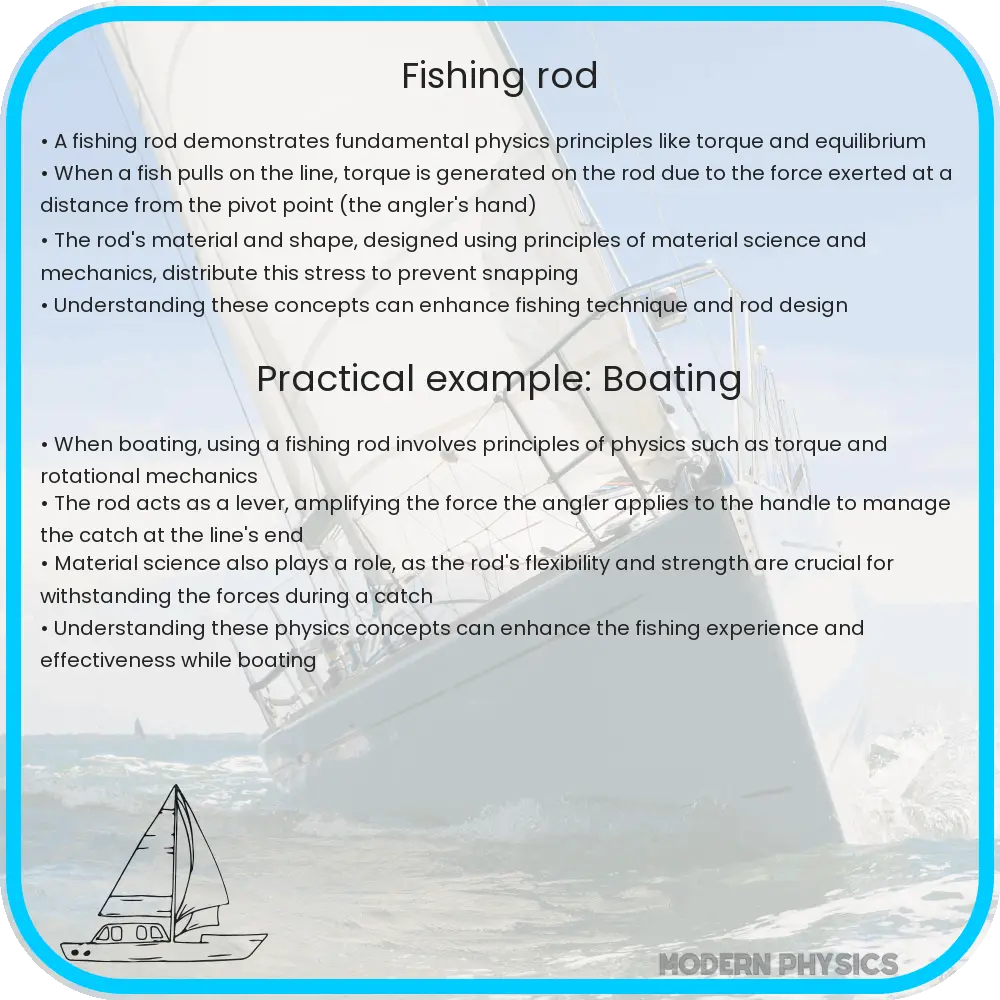Explore the dynamics of fishing rods, focusing on their flexibility, action, and strength, and learn how to choose the perfect rod for any fishing scenario.

Fishing Rod Dynamics: Understanding Flexibility, Action, and Strength
Fishing, a pastime cherished by many, combines skill, patience, and the right equipment. Central to this equipment is the fishing rod, a tool that has evolved significantly over time. Modern fishing rods are marvels of engineering, designed to provide the perfect balance of flexibility, action, and strength. Understanding these characteristics is crucial for both amateur and seasoned anglers to enhance their fishing experience.
Flexibility
The flexibility of a fishing rod refers to its ability to bend under pressure without breaking. This characteristic is critical as it determines how well the rod can handle the weight and fight of a fish. Rods are typically made from materials like fiberglass, graphite, or a composite of both, each offering different levels of flexibility. Fiberglass rods, known for their durability and heavy action, are more flexible and can bend more. Graphite rods, on the other hand, are stiffer and more sensitive, allowing for better transmission of vibrations from the line to the angler’s hand.
Action
Action describes where a rod bends when pressure is applied. Rods are categorized as fast, medium, or slow action. Fast action rods bend primarily near the tip, offering better sensitivity and quicker power for setting the hook. Medium action rods bend near the middle, providing a balance between sensitivity and flexibility. Slow action rods, bending throughout their length, are ideal for casting lighter baits and fighting fish more gently.
Strength
Strength, or power, of a rod, indicates its ability to withstand force without breaking. It’s measured in terms like ultralight, light, medium, medium-heavy, and heavy. This measurement often correlates with the line and lure weight the rod can effectively handle. For instance, ultralight rods are suitable for small fish and lighter lines, while heavy rods can tackle larger fish and heavier lines.
These characteristics are influenced by the rod’s construction materials and design. For example, the modulus of elasticity, denoted as E, a fundamental property of materials, plays a pivotal role. High-modulus graphite, represented as Ehigh, indicates stiffer rods that offer greater sensitivity and faster action. Conversely, lower modulus materials like Elow fiberglass provide more flexibility but less sensitivity.
Material Composition and Its Impact
The material composition of a rod greatly influences its flexibility, action, and strength. Advanced materials like High-Modulus/High-Strain Rate graphite (HM/HSR) are commonly used in high-end rods for their lightweight and highly responsive nature. These materials allow for the creation of rods that are both strong and sensitive, capable of detecting subtle bites while still providing enough backbone to handle larger fish. The integration of nano-resins and carbon fiber technology further enhances the strength-to-weight ratio, making modern rods more durable and efficient.
Choosing the Right Rod
Selecting the right rod depends on the type of fishing and the angler’s style. For instance, bass fishing in heavy cover requires a heavy, fast-action rod to pull fish out of dense vegetation, while trout fishing in streams might be better suited to a light, slow-action rod for delicate presentations. Additionally, the choice of line and lure must be compatible with the rod’s specifications to optimize performance.
Environmental Factors
Environmental factors like wind and water currents also play a role in rod performance. Heavier, stiffer rods may be necessary in windy conditions to maintain control and accuracy, while slower action rods might be preferable in calm waters for a more natural bait presentation. Understanding these nuances can significantly enhance the fishing experience.
Conclusion
In conclusion, the dynamics of fishing rods encompass a complex interplay of flexibility, action, and strength, each contributing to the rod’s overall performance. Material composition, such as High-Modulus graphite and nano-resin technologies, has revolutionized rod design, offering anglers a wide range of options tailored to specific fishing environments and styles. Whether targeting small stream trout or large offshore species, choosing the right rod can greatly impact the success and enjoyment of your fishing adventure. Remember, a well-chosen rod is not just a tool, but an extension of the angler, bridging the gap between skill and nature.
